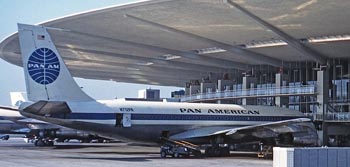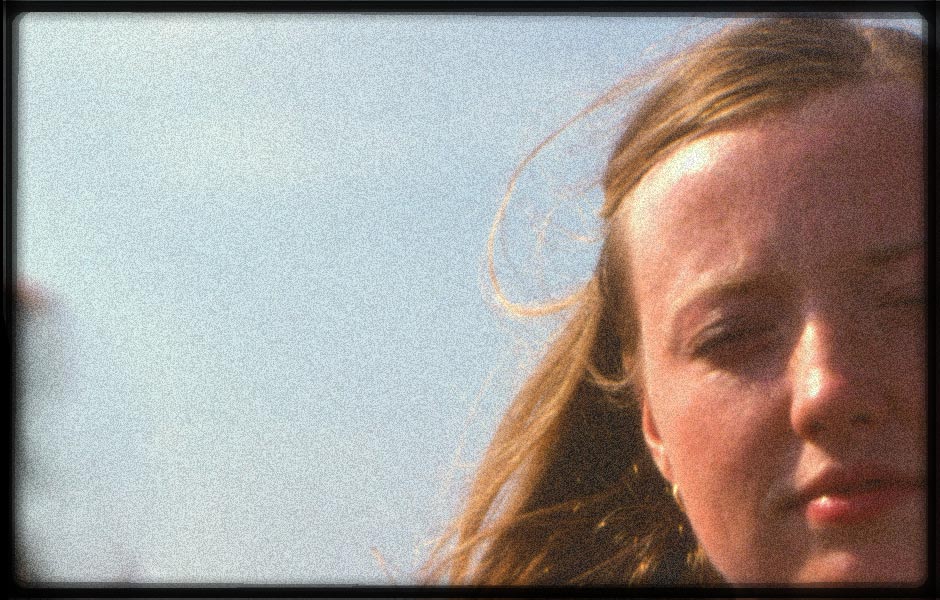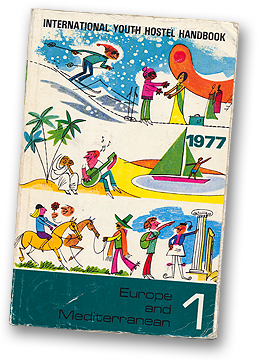 ABC’s new series Pan Am doesn’t at first appear to have much in common with train hikers and other young people making it to Europe on a dime in the ’70s. Yet, one reason many of them got inspired to travel was growing up with the Jet Age in the ’60s. When the sleek, gleaming jetliners took over from the old propeller planes, it wasn’t just a change of motive power, but it revamped air travel. The new planes traveled faster, smoother and brought more passengers to their destinations. The ’60s was a time when the jet networks grew to encircle the earth. You could fly to places like London and Paris, but you could also fly to Teheran and Karachi, Singapore and Sydney.
ABC’s new series Pan Am doesn’t at first appear to have much in common with train hikers and other young people making it to Europe on a dime in the ’70s. Yet, one reason many of them got inspired to travel was growing up with the Jet Age in the ’60s. When the sleek, gleaming jetliners took over from the old propeller planes, it wasn’t just a change of motive power, but it revamped air travel. The new planes traveled faster, smoother and brought more passengers to their destinations. The ’60s was a time when the jet networks grew to encircle the earth. You could fly to places like London and Paris, but you could also fly to Teheran and Karachi, Singapore and Sydney.
Pan Am, the TV show, captures that glamour, when girls wanted to be stewardesses and boys pilots, to soar into the sky, and to see the world. The Jet Age made air travel widely available and then when the odd man out, Icelandic, came along and provided the service cheaper — so cheap even a hippie could afford it — young people flocked to take the trip over to Europe.
But not all young people flew Icelandic. For many, having to go in and out of Europe via Luxembourg was too limiting. I know plenty of kids who flew open jaw, landing on one end of the continent and leaving from another. Or maybe an airline flying to the specific, desired region of Europe was more convenient.
I really don’t think the masses of college age kids from around the world would have been able to travel the way they did in the ’70s, had it not been for the Jet Age of the ’60s.
The funny thing is that even on the lowest fare back then, you still got good service. I remember an airline advertising that they wouldn’t fill the middle seat, so the persons in the inner and outer seats would have more space. Yeah, that wouldn’t happen today. The glamour and sense of adventure got lost, replaced by notoriously overbooked planes and harried cabin crews. Add to that seemingly endless security checks and somehow I don’t sense that airlines today really inspire young people to want to get out, travel, and see the world.



 In the book, Carensa stays mostly in Youth Hostels which she finds through her trusty little guide to hostels in Europe. They were (and are) a great alternative for budget travelers. Almost every city in Europe has one. Depending on the country, there may be an upper age limit (they are for young people after all) and membership in the International Youth Hostel Federation may be required.
In the book, Carensa stays mostly in Youth Hostels which she finds through her trusty little guide to hostels in Europe. They were (and are) a great alternative for budget travelers. Almost every city in Europe has one. Depending on the country, there may be an upper age limit (they are for young people after all) and membership in the International Youth Hostel Federation may be required.